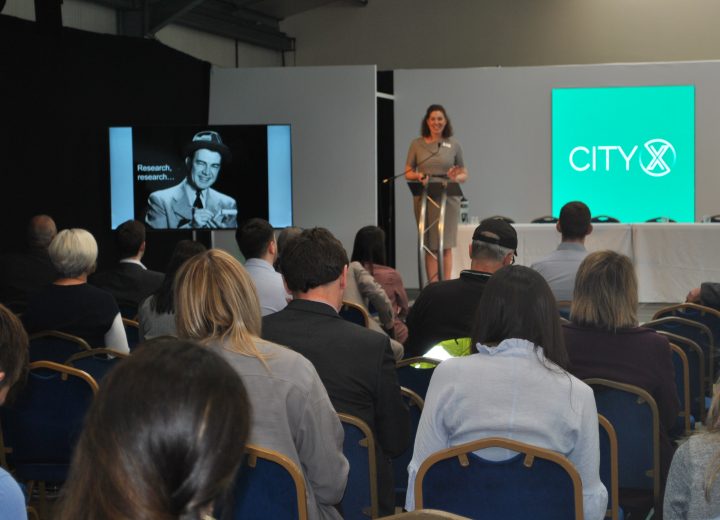Hitting the Headlines: Top Tips for Talking to Journalists
We often get approached by new clients who say they’ve tried pitching their stories to journalists only to encounter all sorts of problems and challenges. From feeling like they’re wasting a journalist’s time to worrying that they’re becoming a nuisance, we’ve heard all the anecdotes and we’ve come up with a list of tips to overcome them.
Research key publications
Identifying your target media should be your first job. When we win a new client that’s one of our priorities. Think about the publications or bulletins you read for your role and those that your target audiences are reading; are they covering stories about organisations like yours?
Skim through some old copies and get a feel for the type of content they’re sharing. Would your news stories fit into a future edition?
There are literally thousands of media outlets, from broadcast TV and radio to business e-shots and local press and specialist trade magazines, so take your time and find the right fit for your business.
Get to know the journalists
Once you have your media list, find out who you need to talk to in the newsroom, look them up on social media and work out what they’re interested in writing about and their style of writing.
PR professionals will have access to a journalist database which can provide vast insight into what a journalist writes about, when their deadlines are and how they prefer to be approached. These are all useful insights to help you get it right the first time you get in touch.
Make contact early
Once you’ve built a list of the journalists you’ll be targeting, get on the phone or pop into their office to introduce yourself. You’ll feel more at ease pitching your stories to them in the future and they’ll be able to put a face to a name.
Making first contact can be scary, we know that, so why not read their latest piece and mention that during your first conversation? It’ll show you’ve taken an interest in their work and give you something to talk about to break the ice.
Use your first meeting as an opportunity to pitch a good news piece, even if it’s not coming up for a couple of weeks. Keep in touch and maintain regular communication, but don’t become a nuisance. Respecting their deadlines and editorial meetings will win you their respect. And don’t call them on print deadline day, unless your story is worth holding the front page for.
Remember that a good relationship with a journalist can be beneficial for both of you in the long run. They’ll know where to come for topical comments or features and you’ll have someone you can trust if you need to issue a statement in a crisis.
Issue good quality releases
Newsroom staff numbers have depleted substantially in recent years and as a result the remaining journalists are busy. Issuing a poorly constructed or woolly news release will only annoy journalists so take your time and make sure that what you’re sending out is newsworthy.
A quick check is to ask yourself, ‘Is this new, unusual, significant or interesting?’ If you can’t answer yes to at least one of those then perhaps it should be an update on your website and social media rather than a news release.
If you don’t have a communications team, then you’ll need to brush up your news release writing skills yourself. Remember when you researched your target journalists? Look at their preferred style and mimic it. It’ll help get you past the first hurdle.
Make sure you include all the necessary information, the who, what, why, when and how, along with quotes and suitable high res images. If you can save a journalist five minutes, do it!
Don’t write an advertisement instead of a news release. If all you’re doing is promoting your product or service then a journalist will probably aim it straight at the bin – or pass your release to the advertising sales team, which means you’ll have to pay to have it published.
Follow Up
Thank any journalists who have used your story, either by tagging them in via social media when you share the link to their website story, or by dropping them a quick email.
If you’ve sold in a story to a journalist and they haven’t used it after a couple of days, it’s time to get on the phone and find out if they need something else. If they’ve seen it covered elsewhere perhaps they’re looking for a new angle or different images before they’ll use it.
The most important thing to remember is not to take it personally if a journalist doesn’t use your release. Use your warm relationship to find out why it didn’t make the cut and improve on it next time.
Media relations is just one of the services we’re proud to offer. We’ve helped a range of organisations improve their relationships with their target journalists to ensure greater coverage and media opportunities.
From national breakfast television appearances for sports teams to trade features for food manufacturers, we’ve achieved great coverage based on good relationships built up with a range of journalists over the years.
Take a look at our case studies page to see our most recent examples or get in touch to find out how we can support you as you raise the profile of your company.
Get in touch with the team today on 01522 528540 or via email to hello@weareshootingstar.co.uk










